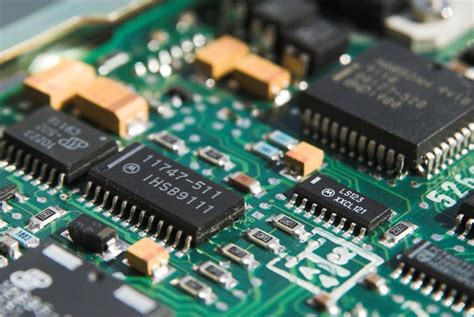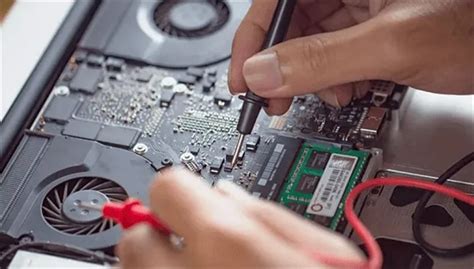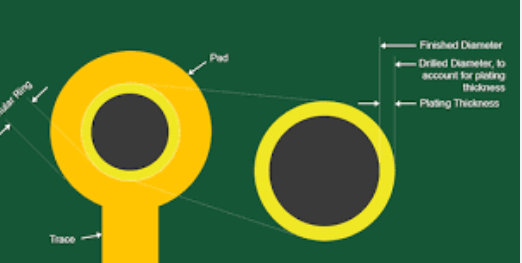Ceramic substrate pcb
Advantages Of Using Ceramic Substrate PCBs In High-Frequency Applications
Ceramic substrate PCBs have emerged as a pivotal component in the realm of high-frequency applications, offering a multitude of advantages that make them an ideal choice for engineers and designers. As the demand for high-performance electronic devices continues to escalate, the need for substrates that can withstand extreme conditions while maintaining superior performance becomes increasingly critical. Ceramic substrates, with their unique properties, provide a robust solution to these challenges.
One of the primary advantages of ceramic substrate PCBs is their exceptional thermal conductivity.
Unlike traditional materials such as FR-4, ceramics like aluminum oxide and aluminum nitride offer significantly higher thermal conductivity. This property is crucial in high-frequency applications where heat dissipation is a major concern. Efficient heat management ensures that the components operate within their optimal temperature range, thereby enhancing the reliability and longevity of the device. Moreover, the ability to effectively dissipate heat allows for higher power densities, enabling the design of more compact and efficient electronic systems.
In addition to thermal management, ceramic substrates exhibit excellent electrical insulation properties.
This characteristic is particularly beneficial in high-frequency applications where signal integrity is paramount. The low dielectric constant and loss tangent of ceramic materials minimize signal distortion and attenuation, ensuring that high-frequency signals are transmitted with minimal loss. Consequently, this leads to improved performance and efficiency of the electronic device, making ceramic substrates an attractive option for applications such as RF modules, microwave circuits, and power amplifiers.
Furthermore, ceramic substrate PCBs are renowned for their mechanical strength and durability.
The inherent rigidity of ceramic materials provides a stable platform that can withstand mechanical stresses and vibrations, which are often encountered in high-frequency environments. This robustness not only enhances the structural integrity of the PCB but also reduces the risk of damage during manufacturing and operation. As a result, devices utilizing ceramic substrates are better equipped to endure harsh conditions, making them suitable for use in aerospace, automotive, and industrial applications.
Another noteworthy advantage of ceramic substrates is their compatibility with advanced manufacturing techniques.
The precision and versatility of ceramic processing allow for the integration of complex circuit designs and miniaturization of components. This capability is essential in high-frequency applications where space constraints and intricate circuitry are common challenges. Additionally, ceramic substrates can accommodate a variety of metallization options, including thick-film and thin-film technologies, providing designers with the flexibility to tailor the PCB to specific application requirements.
Moreover, the environmental stability of ceramic substrates cannot be overlooked.
These materials exhibit excellent resistance to chemical corrosion and moisture absorption, ensuring consistent performance even in adverse environmental conditions. This stability is particularly advantageous in high-frequency applications where exposure to harsh environments is inevitable. By maintaining their properties over a wide range of temperatures and conditions, ceramic substrates contribute to the overall reliability and performance of the electronic device.
In conclusion, the advantages of using ceramic substrate PCBs in high-frequency applications are manifold.
Their superior thermal conductivity, electrical insulation, mechanical strength, and environmental stability make them an indispensable choice for engineers seeking to optimize the performance and reliability of their designs. As technology continues to advance, the role of ceramic substrates in high-frequency applications is poised to become even more significant, driving innovation and enabling the development of cutting-edge electronic devices.
Thermal Management Solutions With Ceramic Substrate PCBs
Ceramic substrate PCBs have emerged as a pivotal solution in the realm of thermal management, addressing the ever-increasing demands for efficient heat dissipation in electronic devices. As electronic components become more compact and powerful, the challenge of managing heat effectively has intensified. This is where ceramic substrates, with their superior thermal properties, come into play, offering a robust alternative to traditional materials like FR-4.
One of the primary advantages of ceramic substrate PCBs is their exceptional thermal conductivity
Unlike conventional materials, ceramics such as aluminum oxide (Al2O3) and aluminum nitride (AlN) possess high thermal conductivity, which facilitates the rapid dissipation of heat away from critical components. This characteristic is particularly beneficial in high-power applications where excessive heat can lead to performance degradation or even failure. By efficiently managing heat, ceramic substrates help maintain the reliability and longevity of electronic devices.
In addition to their thermal properties, ceramic substrates offer excellent electrical insulation.
This dual capability of conducting heat while insulating electrically makes them ideal for applications where both thermal management and electrical isolation are crucial. For instance, in power electronics and LED lighting, where high voltages and temperatures coexist, ceramic substrates provide a safe and effective solution. Furthermore, their inherent resistance to thermal expansion ensures dimensional stability, reducing the risk of mechanical stress and potential damage to the PCB and its components.
Moreover, ceramic substrate PCBs are known for their durability and resistance to harsh environmental conditions.
they exhibit superior chemical resistance, making them suitable for use in environments where exposure to corrosive substances is a concern. Additionally, their ability to withstand high temperatures without degrading makes them ideal for applications in automotive, aerospace, and industrial sectors, where reliability under extreme conditions is paramount.
Transitioning to the manufacturing aspect, ceramic substrate PCBs are produced using advanced techniques such as thick-film and thin-film processes.
These methods allow for precise control over the deposition of conductive and resistive materials, enabling the creation of complex circuit patterns with high accuracy. The versatility of these manufacturing processes also allows for the integration of various components directly onto the substrate, further enhancing the functionality and compactness of the final product.
Despite their numerous advantages, it is important to acknowledge the challenges associated with ceramic substrate PCBs.
One of the primary concerns is their cost, which is generally higher than that of traditional materials. This is due to the complexity of the manufacturing processes and the cost of raw materials. However, the long-term benefits in terms of performance, reliability, and reduced maintenance often justify the initial investment, especially in high-stakes applications where failure is not an option.
In conclusion, ceramic substrate PCBs represent a significant advancement in thermal management solutions, offering unparalleled thermal conductivity, electrical insulation, and durability. As the demand for more efficient and reliable electronic devices continues to grow, the role of ceramic substrates is likely to expand, driving further innovation in the field. By addressing the critical challenge of heat dissipation, ceramic substrate PCBs not only enhance the performance of electronic devices but also contribute to their sustainability and longevity, making them an indispensable component in modern electronics.

Comparing Ceramic Substrate PCBs To Traditional FR4 PCBs
Ceramic substrate PCBs and traditional FR4 PCBs are two distinct types of printed circuit boards that serve as the backbone for electronic devices. Each type has its own set of characteristics, advantages, and limitations, making them suitable for different applications. Understanding the differences between these two materials is crucial for engineers and designers when selecting the appropriate substrate for their specific needs.
Ceramic substrate PCBs are known for their excellent thermal conductivity and high-temperature resistance.
These properties make them ideal for applications that involve high power and heat dissipation, such as LED lighting, power electronics, and automotive electronics. The ceramic material, typically aluminum oxide or aluminum nitride, allows for efficient heat transfer away from critical components, thereby enhancing the reliability and longevity of the device. In contrast, traditional FR4 PCBs, which are made from a woven fiberglass cloth with an epoxy resin binder, have lower thermal conductivity. This makes them less suitable for high-temperature applications but perfectly adequate for a wide range of consumer electronics where heat management is not as critical.
Moreover, ceramic substrates offer superior mechanical strength and dimensional stability compared to FR4.
This robustness is particularly beneficial in environments subject to mechanical stress or vibration, such as aerospace and military applications. The inherent rigidity of ceramic materials ensures that the PCB maintains its structural integrity under challenging conditions. On the other hand, FR4 PCBs, while less rigid, provide a degree of flexibility that can be advantageous in applications where slight bending or flexing is required.
Another significant difference between ceramic and FR4 PCBs lies in their dielectric properties.
Ceramic substrates exhibit excellent dielectric strength and low dielectric loss, which are essential for high-frequency applications. This makes them suitable for RF and microwave circuits, where signal integrity is paramount. Conversely, FR4 PCBs, with their higher dielectric constant and loss tangent, may not perform as well in high-frequency scenarios but are still widely used in digital and analog circuits due to their cost-effectiveness and versatility.
Cost is another factor that differentiates ceramic substrate PCBs from traditional FR4 PCBs.
Ceramic materials are generally more expensive than FR4, which can be a limiting factor for budget-conscious projects. The higher cost is attributed to the complex manufacturing processes and the material itself. However, the investment in ceramic substrates can be justified by their performance benefits in specific applications where reliability and thermal management are critical. In contrast, FR4 PCBs offer a more economical solution for mass-produced consumer electronics, where cost efficiency is a primary concern.
In terms of environmental impact, both ceramic and FR4 PCBs have their own considerations.
Ceramic substrates are often seen as more environmentally friendly due to their inert nature and lack of volatile organic compounds. However, the energy-intensive manufacturing process can offset some of these benefits. FR4 PCBs, while containing epoxy resins that can release harmful substances during production and disposal, are widely recycled, which helps mitigate their environmental footprint.
In conclusion, the choice between ceramic substrate PCBs and traditional FR4 PCBs depends on the specific requirements of the application.
Ceramic substrates offer superior thermal management, mechanical strength, and dielectric properties, making them suitable for high-performance and high-reliability applications. In contrast, FR4 PCBs provide a cost-effective and versatile solution for a broad range of consumer electronics. By carefully considering the unique advantages and limitations of each material, engineers and designers can make informed decisions that optimize the performance and cost-effectiveness of their electronic devices.

Innovations In Ceramic Substrate PCB Manufacturing Techniques
Ceramic substrate printed circuit boards (PCBs) have emerged as a pivotal innovation in the electronics industry, offering a range of benefits that traditional materials like FR-4 cannot match. As the demand for high-performance electronic devices continues to grow, the need for advanced materials that can withstand extreme conditions becomes increasingly critical.
Ceramic substrates, known for their excellent thermal conductivity, mechanical strength, and electrical insulation properties, are at the forefront of this technological evolution. Recent advancements in manufacturing techniques have further enhanced the capabilities and applications of ceramic substrate PCBs, making them an indispensable component in various high-tech industries.
One of the most significant innovations in ceramic substrate PCB manufacturing is the development of low-temperature co-fired ceramics (LTCC).
This technique involves the co-firing of multiple layers of ceramic and metal at relatively low temperatures, typically below 1,000 degrees Celsius. LTCC technology allows for the integration of passive components such as resistors, capacitors, and inductors directly into the substrate, thereby reducing the overall size and weight of the electronic device. Moreover, LTCC substrates exhibit excellent thermal stability and can operate efficiently in harsh environments, making them ideal for aerospace, automotive, and telecommunications applications.
In addition to LTCC, high-temperature co-fired ceramics (HTCC) have also gained traction in the industry.
Unlike LTCC, HTCC involves firing at temperatures exceeding 1,600 degrees Celsius, resulting in substrates with superior mechanical strength and thermal conductivity. This makes HTCC particularly suitable for applications that require robust performance under extreme thermal and mechanical stress, such as power electronics and LED lighting systems. The ability to withstand high temperatures without compromising performance is a key advantage of HTCC substrates, further expanding their applicability in cutting-edge technologies.
Another noteworthy advancement in ceramic substrate PCB manufacturing is the use of additive manufacturing techniques, commonly known as 3D printing.
This approach allows for the precise deposition of ceramic materials layer by layer, enabling the creation of complex geometries and customized designs that were previously unattainable with traditional manufacturing methods. Additive manufacturing not only enhances design flexibility but also reduces material waste and production costs, making it an attractive option for prototyping and small-scale production. As 3D printing technology continues to evolve, it is expected to play an increasingly important role in the fabrication of ceramic substrate PCBs.
Furthermore, the integration of advanced surface treatment techniques has significantly improved the performance and reliability of ceramic substrate PCBs.
For instance, the application of thin-film coatings can enhance the substrate’s resistance to moisture, chemicals, and mechanical abrasion, thereby extending the lifespan of the electronic device. Additionally, surface treatments can improve the adhesion of conductive traces, ensuring better electrical performance and reducing the risk of circuit failure.
In conclusion, the innovations in ceramic substrate PCB manufacturing techniques have opened new avenues for the development of high-performance electronic devices.
The advancements in LTCC and HTCC technologies, coupled with the adoption of additive manufacturing and advanced surface treatments, have significantly enhanced the capabilities of ceramic substrates. As the electronics industry continues to push the boundaries of what is possible, ceramic substrate PCBs are poised to play a crucial role in meeting the demands of next-generation applications. With ongoing research and development, it is anticipated that further breakthroughs will continue to drive the evolution of ceramic substrate PCBs, solidifying their position as a cornerstone of modern electronics.






